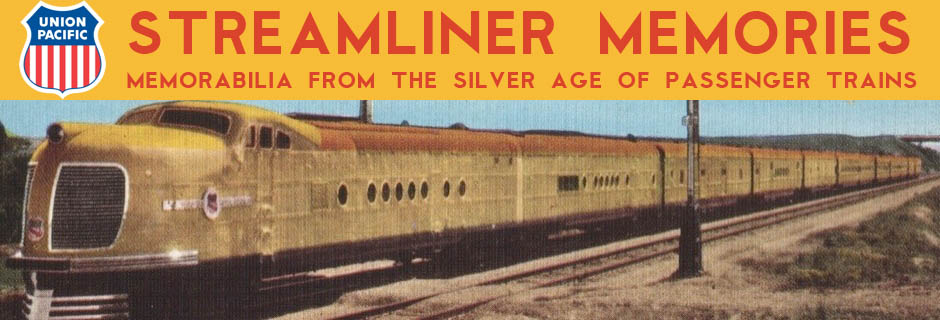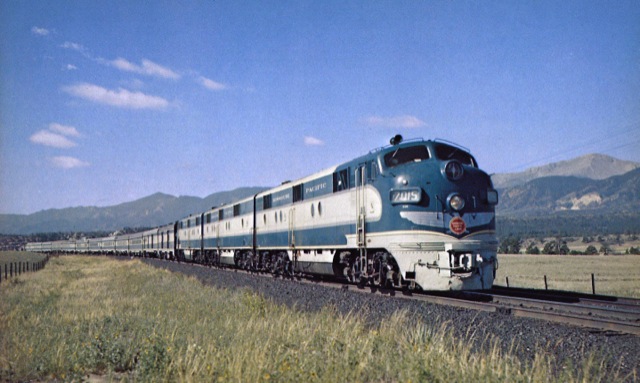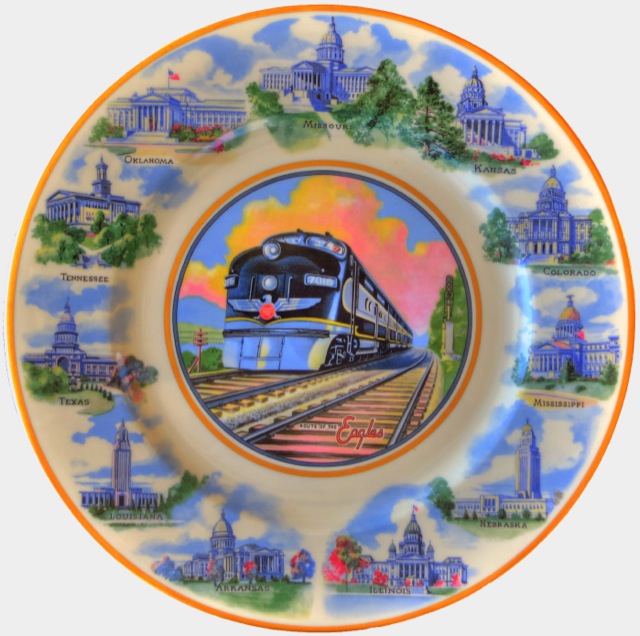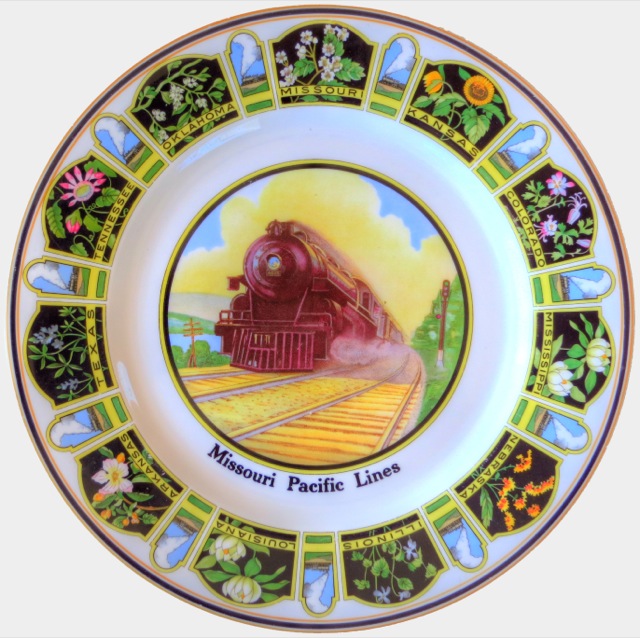I was surprised to learn that the second train, after the Twin Zephyrs, to feature a dome car in regularly scheduled service was the relatively little-known Colorado Eagle. I don’t have any memorabilia for this train, and it doesn’t seem like many other people do either.
The Colorado Eagle between Pueblo and Denver. Click image for a larger view.
Patrick Dorin’s book, The Domeliners, covers the Eagles in chapter 10, well after chapters about trains that only acquired domes several years later, such as the Empire Builder and North Coast Limited. Karl Zimmerman’s book, Domeliners, barely mentions the Colorado Eagle and has only a couple of photos of the dome cars used later on the Texas Eagle. Though Zimmermann’s book is full of images of memorabilia, there are none of the Eagles.
I can think of a couple of reasons why the Eagles are neglected by railfans and historians. First, while the Twin Zephyrs were day trains out of Chicago, the nation’s second city, the Colorado Eagle was an overnight train out of St. Louis, which in 1950 was the nation’s eighth-largest city and was a distant second to Chicago as a rail hub.
Second, even during daylight hours, the only major scenery on the route was in Colorado, after the Missouri Pacific turned the train over to the Denver & Rio Grande Western. (Some early photos of the train show the Rio Grande name on the locomotive nose in small letters.) Finally, the train usually only had one dome car, and even that didn’t last beyond 1964, when Missouri Pacific moved it to the Missouri River Eagle, which did operate during daylight hours.
Nevertheless, as the above photo shows, the Colorado Eagle had a striking appearance. Missouri Pacific was one of the few railroads to paint its passenger trains blue, a paint scheme designed by Raymond Loewy. The railroad’s history with streamlined trains went back to March, 1940, when it introduced the Eagle (later the Missouri River Eagle) between St. Louis and Omaha.
The Colorado Eagle followed in June, 1941. By the time the dome car was added, it was an eight-car train, including a dorm-grill-coach with 48 revenue seats; a 56-seat coach; the 46-seat (plus 24 in the dome) dome car; a diner-lounge; two sleeping cars with 14 roomettes and 4 bedrooms; a sleeper with eight sections, a drawing room, and three bedrooms; and a 64-seat coach that only went as far as Kansas City. The above photo shows one more coach and one more car at the back, which may be a round-end observation car, though the only photos of MP observation cars I’ve found are for the Missouri River Eagle.
The sleeping cars were built by Pullman, the dome by Budd, and the other cars were aluminum-bodied cars built by American Car & Foundry. The 1941 train was pulled by E6 locomotives, but by the time the dome car was added, E7s were more common.
The 1950 report on streamlined trains records that, despite adding the dome car in 1948, the Colorado Eagle‘s ridership declined by 12 percent and its revenues declined 14 percent even as its costs rose 8 percent in 1949. Nationwide passenger-train ridership declined by 16 percent that year, so a mere 12 percent decline might be counted as a win.
Click image for a larger view.
While I don’t have any paper memorabilia for the Colorado Eagle, I do have this nice service plate picturing a generic Eagle surrounded by images of the capitols of the various states served by the Missouri Pacific, with Missouri on top and Colorado at 2 o’clock. Service plates were put in front of diners at each place setting, then removed before the actual food was served. The railroad also sold these plates to passengers for a nominal amount. These plates were made between 1949 and 1961.
Click image for a larger view.
The Diesel service plate was a follow-on to the steam service plate that the railroad used between 1929 and the late 1940s. The train shown on the plate is called the Sunshine Special, which operated between St. Louis and Texas, surrounded by the state flowers of each of the states served by MP in the same order as on the Eagle plate. Though older than the Eagle plate, the Sunshine Special plates were more numerous and thus may be a little less valuable.




I just learned today, thanks to your 1960 timetable scan, that the Colorado Eagle carried one or two heavyweight Sleepers in its otherwise streamlined consist, and labeled them “Thrift-T-Sleepers.” The timetable advertises a $16 savings over the regular First Class and Pullman fare, for round-trip travel between St. Louis and Denver. (This is the equivalent of about a $125 savings today, or about 25% off).